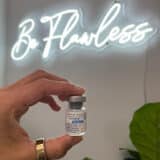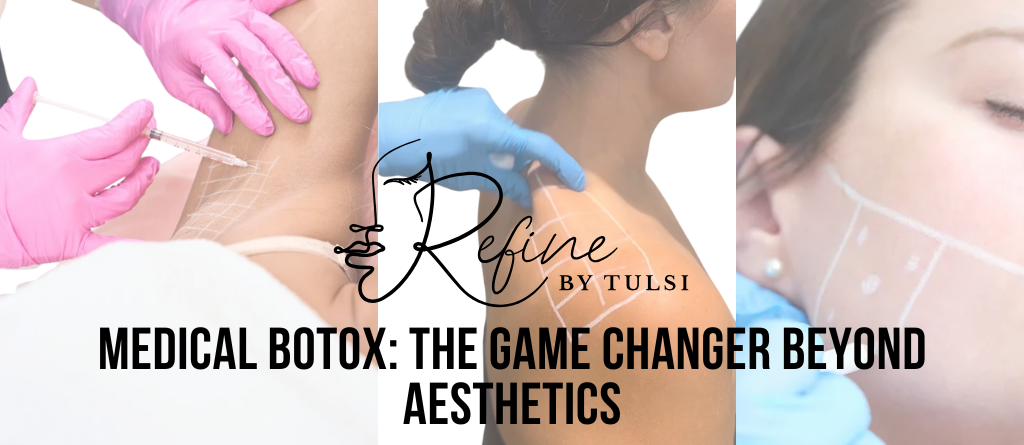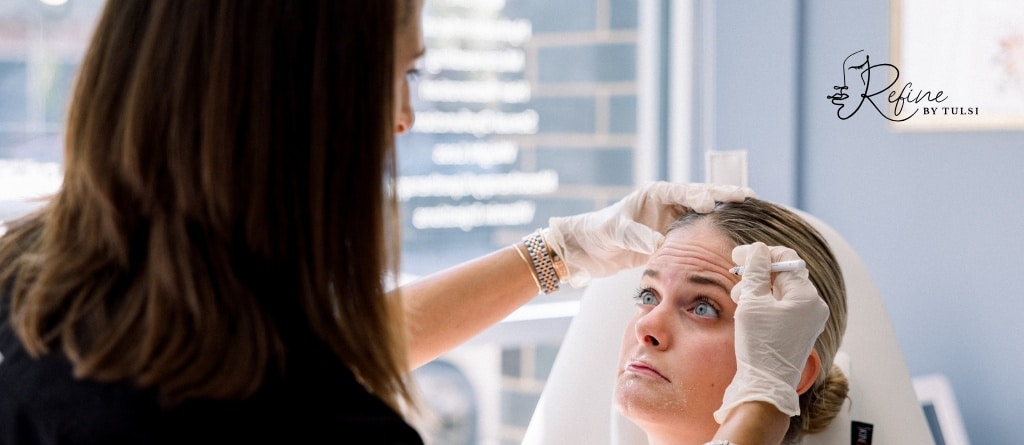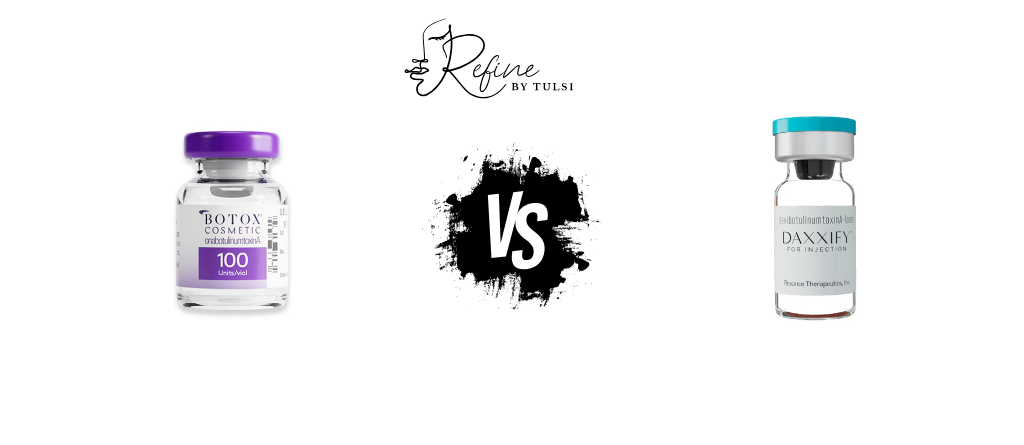Xeomin vs. Botox: Which One is Right for You?
When it comes to reducing wrinkles and achieving a smoother, more youthful appearance, neuromodulators are among the most popular and effective treatments available. However, with options like Xeomin, Botox, and Dysport, you might be wondering which one is the best fit for your needs. At Refine by Tulsi in Logan Square, Chicago, we offer all of these top neuromodulators and provide personalized recommendations based on your unique goals. In this blog, we’ll explore the differences between Xeomin and Botox, helping you make an informed decision.
What Are Neuromodulators?
Neuromodulators such as Xeomin and Botox are injectable treatments designed to temporarily relax the muscles that cause dynamic wrinkles—those lines that form due to repeated facial expressions like frowning, squinting, or smiling. By reducing muscle activity, these treatments help smooth out existing wrinkles and prevent new ones from forming, giving you a more youthful, refreshed appearance.
Understanding the Key Differences
1. Botox: The Gold Standard
Botox is perhaps the most well-known neuromodulator and has been a trusted choice for cosmetic treatments since it was FDA-approved for aesthetic use in 2002. It’s commonly used to treat forehead lines, crow’s feet, and frown lines between the eyebrows.
•Molecular Composition: Botox contains botulinum toxin type A along with accessory proteins that help it bind effectively to the targeted muscles.
•Onset and Duration: Results from Botox typically begin to appear within 3-5 days, with full effects visible around 7-14 days. The results usually last 3-4 months.
•Best For: Patients seeking a well-established, reliable treatment with a long track record of safety and effectiveness.
2. Xeomin: Pure and Simple
Xeomin is often referred to as the “naked” neurotoxin because it contains only the active botulinum toxin type A, without any accessory proteins. This pure formulation reduces the risk of developing resistance to the treatment over time.
•Molecular Composition: Xeomin is free of complexing proteins, offering a straightforward option that’s less likely to cause allergic reactions.
•Onset and Duration: Xeomin’s results typically start to appear within 3-5 days, similar to Botox, with effects lasting around 3-4 months.
•Best For: Patients who prefer a purer formula or are concerned about developing resistance to other neuromodulators.
Why Choose Xeomin or Botox?A Feature-by-Feature Breakdown
Choosing between Xeomin and Botox can be challenging, given that both neuromodulators offer effective solutions for reducing wrinkles and achieving a smoother, more youthful appearance. To help you make an informed decision, here’s a detailed analysis of the key features and a summary of the verdicts based on each feature.
1. Molecular Composition
•Botox: Botox contains botulinum toxin type A along with accessory proteins. These proteins help the active ingredient bind effectively to the targeted muscles but may also increase the risk of developing resistance or allergic reactions over time.
•Xeomin: Xeomin is often referred to as the “naked” neurotoxin because it contains only the active botulinum toxin type A without any accessory proteins. This purer formulation minimizes the potential for allergic reactions and reduces the risk of the body developing resistance to the treatment.
Verdict: Xeomin is the winner for those seeking a purer formulation with a lower risk of resistance or allergic reactions.
2. FDA Approval
•Botox: Botox has a long history of use and is FDA-approved for a wide range of cosmetic and medical applications, including the treatment of forehead lines, crow’s feet, glabellar lines, chronic migraines, and excessive sweating (hyperhidrosis).
•Xeomin: Xeomin is FDA-approved for the treatment of glabellar lines (frown lines between the eyebrows) and similar cosmetic applications. However, it has fewer approved medical uses compared to Botox.
Verdict: Botox wins for its broader range of FDA-approved uses, making it a versatile choice for both cosmetic and medical treatments.
3. Onset of Results
•Botox: Patients typically begin to see results from Botox within 3-5 days, with full effects visible around 7-14 days. This timing allows for a gradual improvement in the appearance of wrinkles.
•Xeomin: Xeomin has a similar onset time, with results generally appearing within 3-5 days and full effects developing within a week or two. Some patients report noticing the effects of Xeomin slightly sooner, though this can vary.
Verdict: Tie. Both Xeomin and Botox offer similar onset times, making them equally effective in terms of how quickly patients can expect to see results.
4. Duration of Effects
•Botox: The effects of Botox typically last about 3-4 months, after which follow-up treatments are required to maintain the results.
•Xeomin: Xeomin also provides results that last around 3-4 months. However, some patients report that Xeomin’s effects may last slightly longer due to its purer composition, though this is not universally experienced.
Verdict: Xeomin edges out slightly, as some patients experience longer-lasting effects, but the difference is generally minimal.
5. Best For
•Botox: With its long-standing reputation and wide range of uses, Botox is ideal for individuals looking for a trusted, time-tested treatment. It’s especially beneficial for those who may also need treatment for FDA-approved medical conditions like migraines or hyperhidrosis.
•Xeomin: Xeomin is best suited for individuals seeking a purer formula, particularly those who are concerned about developing resistance to other neuromodulators or who have experienced allergic reactions in the past.
Verdict: Depends on Patient Needs. The choice between Xeomin and Botox ultimately depends on individual preferences and specific medical or cosmetic requirements.
6. Treatment Areas
•Botox: Botox is widely used to treat multiple areas of the face, including forehead lines, crow’s feet, glabellar lines, and more. It’s also approved for non-cosmetic uses, adding to its versatility.
•Xeomin: While Xeomin is primarily used for glabellar lines, it’s also effective in treating other areas similar to Botox. However, its use is generally more focused on specific cosmetic concerns.
Verdict: Botox wins for its broader range of treatment areas and applications, offering more versatility for patients with multiple cosmetic or medical needs.
7. Cost
•Botox: The cost of Botox is typically calculated per unit, with the overall price varying depending on the treatment area and the number of units required. Botox is generally slightly more expensive per unit than Xeomin.
•Xeomin: Xeomin is often slightly less expensive per unit than Botox, but the overall cost of treatment can be similar depending on the number of units needed and the specific treatment plan.
Verdict: Xeomin is the winner for being slightly more cost-effective per unit, although the overall treatment cost may be similar depending on the dosage.
8. Side Effects
•Botox: Common side effects of Botox include mild redness, swelling, bruising at the injection site, and occasional headaches. While generally well-tolerated, the presence of accessory proteins can increase the risk of allergic reactions in some patients.
•Xeomin: Xeomin has similar side effects to Botox, including redness, swelling, and bruising. However, due to its lack of accessory proteins, Xeomin may pose a lower risk of allergic reactions, making it a better option for those with sensitivities.
Verdict: Xeomin wins for having a lower risk of allergic reactions due to its purer composition.
9. Allergies & Resistance
•Botox: Some patients may develop antibodies against the accessory proteins in Botox, potentially leading to reduced effectiveness over time. This risk, while relatively low, can be a concern for long-term users.
•Xeomin: Without accessory proteins, Xeomin has a lower risk of causing resistance or allergic reactions. This makes it a preferred option for patients who have used neuromodulators over a long period or who have experienced resistance with other products.
Verdict: Xeomin is the clear winner for its lower risk of resistance and allergic reactions, making it ideal for long-term use.
10. Ideal Candidates
•Botox: Botox is broadly suitable for most patients, including those who may benefit from its medical applications, such as treating chronic migraines or hyperhidrosis. Its well-established safety profile makes it a versatile option for a wide range of individuals.
•Xeomin: Xeomin is particularly well-suited for patients who have developed resistance to other neuromodulators, have a history of allergic reactions, or simply prefer a purer product without accessory proteins.
Verdict: Depends on Patient Needs. The best choice depends on the patient’s medical history, treatment goals, and personal preferences.
What Does Dr. Kotecha Use for Herself?
Patients often wonder what treatments their own physicians choose, and at Refine by Tulsi, we believe in full transparency. Dr. Kotecha, our lead clinician, personally gets Xeomin injected every 3 months for both Aesthetics (Wrinkles, Crow’s Feet, Etc) and her Masseter Muscle for teeth grinding.

She appreciates Xeomin’s consistent and predictable results, as well as its proven track record. However, Dr. Kotecha also recognizes the unique benefits of Botox and Dysport and often recommends these treatments to patients based on their individual needs and preferences.
Contraindications
While both Xeomin and Botox are safe for most people, certain conditions may require caution:
•Pregnancy and Breastfeeding: It’s generally advised to avoid neuromodulators during pregnancy and breastfeeding.
•Neurological Conditions: Patients with specific neurological conditions should consult with their doctor before receiving treatment.
•Allergies: If you have a history of allergic reactions to botulinum toxin products, Xeomin’s purer formula may be a better option.
Consultation Process at Refine by Tulsi
Your journey to a refreshed, youthful appearance begins with a personalized consultation at Refine by Tulsi:
•Assessment: Dr. Kotecha will assess your skin, discuss your aesthetic goals, and recommend the most appropriate neuromodulator for you.
•Tailored Plan: Based on your unique needs, we’ll create a customized treatment plan to achieve your desired results, whether with Xeomin, Botox, or a combination of both.
Prices of Botox and Xeomin
At Refine by Tulsi, we offer consistent prices regardless of the brand of injectable and with our VIP membership program allow you to lock in affordable pricing as low as $10/Unit.
•Refine VIP Membership: Enjoy exclusive discounts on treatments, including Xeomin and Botox, as well as other services. Learn more by downloading the Refine by Tulsi App

•Seasonal Promotions: Keep an eye out for special offers throughout the year, allowing you to save on your favorite treatments.
Schedule Your Consultation Today
Whether you’re looking to eliminate wrinkles, slimmer jawline, reduce jaw pain, or prevent migraines, Neuromodulators (Xeomin, Botox, and Dysport) provide an effective and versatile solution. At Refine by Tulsi, we specialize in personalized injectables designed to meet your unique needs and aesthetic goals. Schedule a consultation with Dr. Tulsi Kotecha at Refine by Tulsi in Logan Square, Chicago, or call our offices directly at (618) 298-8574.
Additional Resources:
-
At What Age Should I Begin Botox?
-
3 Reasons Why You May Choose BOTOX Over Dermal Fillers
-
How Young Can I Start Botox? A Guide to Preventative Botox and Facial Aesthetics
-
Botox for Masseter Muscle Reduction and Bruxism: Benefits and How It Works
-
Finally, The Perfect Skin Treatment Option for Dark Skin Tones
-
Botox & Xeomin at Refine by Tulsi








